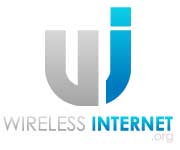Sprint 4G - Wimax and LTE Service
As the wireless world begins to move into a new 4G era and leave aging 3G, or third generation, technologies behind, there is ample confusion about just what constitutes 4G service. Sprint, the third-largest wireless carrier in the country, was the first to deploy a 4G-era network. The technology it chose to use is known as WiMAX, and is often compared to a kind of WiFi connection on steroids. The service is significantly faster than 3G, but has several inherent problems.
One of the main drawbacks of WiMAX Sprint 4G service is that it cannot adequately grow over time, as LTE can. LTE, which stands for Long Term Evolution, is expected to increase its speeds by leaps and bounds -- hundreds of megabits per second -- over the course of its deployment around the world. WiMAX, while able to increase slightly in speed over time, will never match these speeds.
Furthermore, LTE is widely accepted as the world standard for 4G wireless voice and data service. With manufacturers like Apple producing the majority of their phones to adhere to world standards, rather than proprietary 4G technologies like WiMAX Sprint 4G service, it's easy to see why the company has recently chosen to change the directly of its 4G data coverage and deploy an all-LTE network on its 1.9 GHz spectrum. Known as Network Vision, Sprint envisions this deployment as the one which finally unites its Sprint and Nextel arms under one technological umbrella and allows it to rapidly expand and enhance its national 4G coverage and performance.
Sprint WiMAX vs LTE
When it comes to 4G wireless technologies, only LTE is an accepted 4G standard. Sprint 4G WiMAX and HSPA+ technologies, while significantly faster than 3G service, are often thought of as 3.5G -- a sort of bridge between the slow world of 3G and the blazing fast world of LTE-based fourth generation wireless data service. To that end, the primary difference between WiMAX and LTE is speed.
Sprint 4G WiMax, in tests from around the wireless industry, typically maxes out around 12 megabits per second in speed tests, and averages about 4 megabits per second in traditional daily use. That's a far improvement from its 3G services, which occasionally struggle to reach even 1 megabit per second of data transfer speed. But it's barely better than most cable internet services in homes across the country today, and it's simply not enough to power the long-term future of 4G data, which includes video and audio streaming at high, robust bitrates. Verizon's LTE service, on the other hand, often maxes out around 36 megabits per second in tests, and averages about 13 megabits per second in daily use. That's more than triple Sprint's speed, and it's reason enough for the company to switch to the better-performing LTE standard.
Sprint's 4G Coverage in the United States
The company's currently 4G coverage map -- powered by WiMAX -- is spotty. The company has largely restricted its 4G WiMAX data services to major cities throughout the United States, leaving rural and suburban areas in the dark and restricted to 3G coverage services. That's to be expected, as the rollout is ongoing for all four of the major services, but Sprint's network has been around the longest -- and should be most expansive.
Perhaps the company recognized that when it announced its 4G LTE rollout plans. Sprint now promises to cover 250 million Americans with its state of the art LTE network by the end of 2013. That's the vast majority of wireless users and means the company will be expanding outside the major cities and into less populated areas.
Devices for a 4G Network -- New and Old
The problem with unleashing new network technologies is that a whole new line of mobile phones must be developed and released to take advantage of better speeds and coverage. Currently, Sprint has a wide array of 4G WiMAX-capable devices, including its broad array of Android smartphones. The company also carries Apple's iPhone 4 and 4S models which, while currently limited to 3G service, are expected to add support for LTE networks with the new model released in 2012.
The company has stated that it has solid plans to release the devices required for its customers to take full advantage of LTE devices over the course of 2012, so that by the time its network is fully installed in 2013, all of its customers will be able to enjoy their increased speeds and coverage. Additionally, Sprint plans to release a wide array of USB dongles and "MiFi" portable modems that will turn its LTE converge into go-anywhere broadband access for rural internet customers and business travelers alike. Sprint 4G speed is destined to be portable and widely available for a large and diverse group of customers.
Looking Toward Sprint's Future
Sprint was the first US carrier to go 4G, so it has been future-minded, and that's why it opened to deploy its 3.5G WiMAX network in 2010 rather than wait for the eventual deployment of LTE. While other networks have seen their customers rely on outdated 3G services, the company has been able to provide industry-leading Sprint 4G speed with its data plans. With LTE, it only enhances its position as an affordable carrier with industry-leading technologies. And with speeds up to three times faster than current WiMAX rates, the company is likely to impress even its most critical customers when the new network is completed in 2013.
